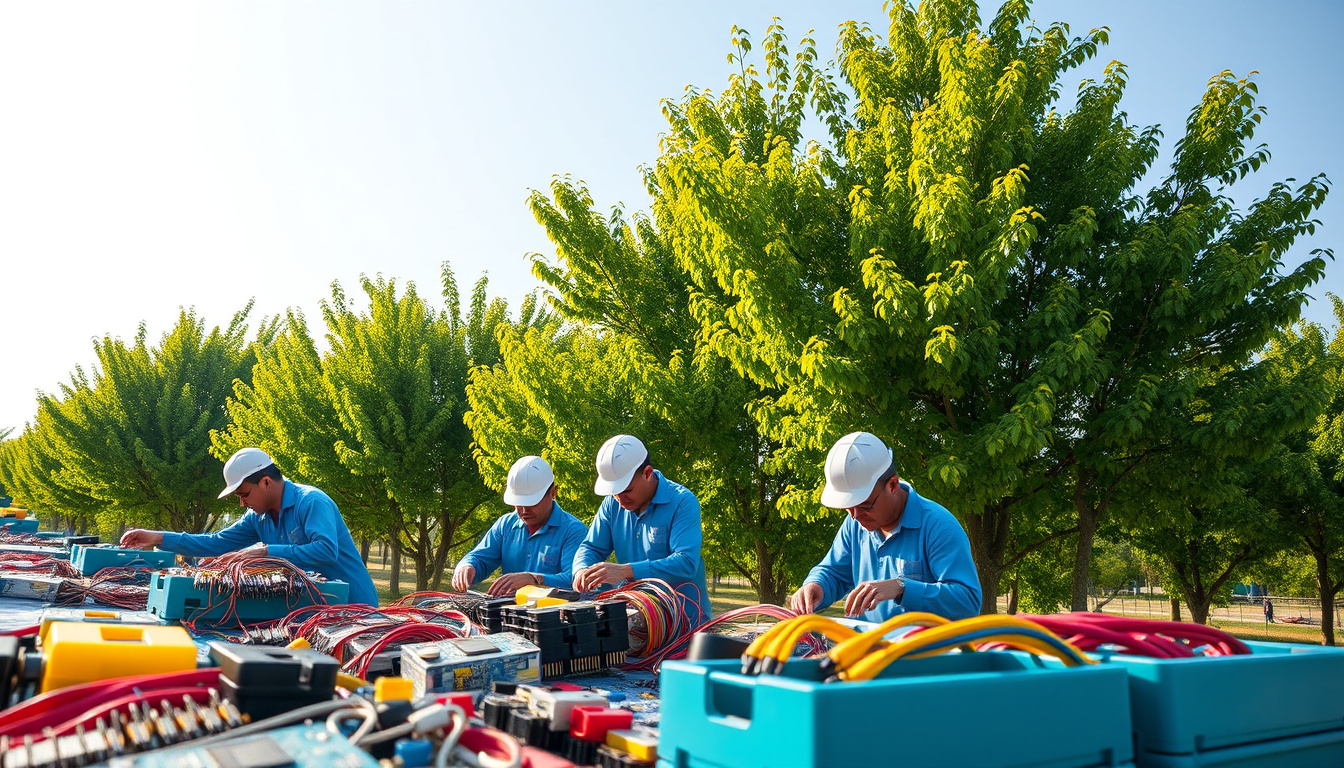As technology continues to advance rapidly, electronic devices become an integral part of our daily lives. However, the increasing use of gadgets such as smartphones, computers, and televisions has led to a significant rise in the accumulation of electronic waste. Electronic waste recycling is crucial to managing this growing environmental challenge. Properly recycling electronic waste not only conserves resources but also prevents hazardous substances found in electronics from contaminating our planet.
In this article, we will explore why electronic waste recycling is essential, the key steps involved in the recycling process, and how individuals and communities can contribute to this vital environmental effort.
Understanding Electronic Waste and Its Environmental Impact
Electronic waste (e-waste) includes discarded electrical and electronic devices. Many of these products contain valuable materials like gold, silver, and copper, as well as toxic elements like lead, mercury, and cadmium. When electronic waste is improperly disposed of, these hazardous substances can leach into soil and water, posing serious health risks to humans and wildlife.
According to the Global E-Waste Monitor, approximately 57.4 million metric tons of e-waste was generated worldwide in 2021, with only 17.4% formally collected and recycled (source). This low recycling rate highlights the urgent need for improved electronic waste recycling practices.
Why Electronic Waste Recycling Matters
Electronic waste recycling plays a critical role in reducing environmental pollution and conserving natural resources. Here’s why it matters:
- Prevention of Environmental Pollution: Proper recycling prevents the release of harmful chemicals into the environment, reducing soil and water contamination.
- Conservation of Natural Resources: Recycling recovers valuable metals and materials, decreasing the need for virgin mining and reducing environmental degradation.
- Energy Savings: Recycling metals from e-waste consumes significantly less energy compared to extracting these metals from ore.
- Reduction in Landfill Use: Efficient recycling decreases the amount of waste ending up in landfills, extending their lifespan.
- Promotion of Sustainable Practices: Encourages manufacturers to design eco-friendly products with recyclability in mind.
Essential Steps in Electronic Waste Recycling
Electronic waste recycling involves a series of carefully managed steps to ensure maximum recovery of materials and safe disposal of hazardous elements. Understanding these steps can help individuals and organizations participate effectively in e-waste recycling initiatives.

1. Collection and Sorting
The first step in electronic waste recycling is the collection of used or discarded electronics. This can occur through drop-off centers, community collection events, or manufacturer take-back programs. Once collected, e-waste is sorted based on the device type, condition, and recyclability. Sorting is vital to streamline processing by separating reusable, recyclable, and hazardous materials.
2. Data Destruction and Device Dismantling
After sorting, sensitive data must be destroyed securely to protect user privacy. For devices like computers and smartphones, this involves data wiping or physical destruction of storage media. Following data destruction, electronic devices are dismantled manually or mechanically to segregate components such as circuit boards, plastics, metals, and batteries.
3. Hazardous Material Removal
Certain components in electronics contain toxic substances, including lead, mercury, and cadmium. These are carefully removed and treated separately to prevent environmental contamination. Batteries, especially lithium-ion types, require specialized handling due to their flammable nature.
4. Material Recovery and Recycling
After the hazardous components are extracted, the remaining materials undergo processes such as shredding, melting, and chemical treatment to recover valuable metals and plastics. Metals like gold, silver, copper, and aluminum are refined and sent back into manufacturing, supporting a circular economy.
5. Proper Disposal of Non-Recyclable Parts
Some parts of e-waste may not be recyclable due to degradation or contamination. These components must be disposed of following strict environmental regulations to mitigate harm.
How You Can Contribute to Electronic Waste Recycling
Everyone has a role to play in electronic waste recycling. Here are several practical ways individuals and communities can support these efforts:
- Donate or Resell Functional Electronics: If your devices are still working, consider donating or reselling them to extend their useful life.
- Use Certified E-Waste Recycling Centers: Always dispose of electronic waste at certified recycling facilities rather than throwing it in the trash.
- Participate in Local Collection Events: Look for community e-waste collection drives and participate actively.
- Reduce Electronic Consumption: Consider repairing devices instead of replacing them unnecessarily.
- Support Legislation and Awareness Campaigns: Advocate for stronger e-waste regulations and educate others about responsible disposal.
Top Tips for Safe and Effective Electronic Waste Recycling
- Backup and wipe all personal data before recycling devices.
- Remove batteries and recycle them separately at designated facilities.
- Avoid mixing e-waste with regular household trash to ensure proper handling.
- Choose reputable recyclers certified by organizations such as e-Stewards or R2.
- Stay informed about local electronic waste disposal laws and guidelines.
Frequently Asked Questions about Electronic Waste Recycling
Q1: What types of electronics can be recycled?
A1: Most electronic devices can be recycled, including computers, televisions, smartphones, printers, and household appliances. Some specialized equipment, like fluorescent bulbs or certain batteries, may require unique recycling processes.
Q2: How can I find a nearby e-waste recycling center?
A2: You can find local recycling centers by searching online directories, visiting municipal government websites, or checking with electronics retailers offering take-back services.
Q3: Does electronic waste recycling save energy?
A3: Yes, recycling electronic waste saves significant amounts of energy compared to producing new materials from raw resources. This energy reduction helps decrease overall carbon emissions.
Conclusion: Join the Movement to Protect Our Environment
Electronic waste recycling is an essential environmental responsibility that benefits us all. By understanding its importance and participating in each step of the process—from proper disposal to supporting recycling initiatives—we can significantly reduce pollution, conserve valuable resources, and promote sustainable development.
Don’t let your old electronics end up polluting our planet. Take action today! Find a certified e-waste recycling center near you, safely recycle your unused devices, and encourage others to do the same. Together, we can make a lasting positive impact on the environment and build a cleaner, healthier future for generations to come.
Junk Guys Orange County
Phone: 949-629-4960
Website: www.junkguysoc.com
Email: junkguysoc@gmail.com
